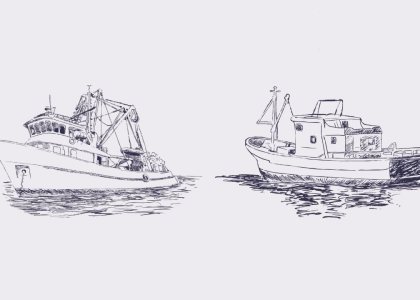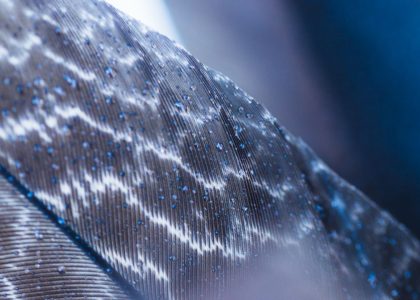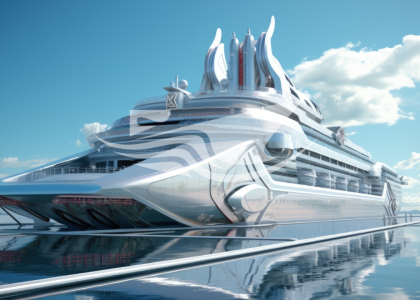The maritime industry is undergoing a transformation driven by innovations in Autonomous Vessels. As vessel performance, sustainability, and cost-efficiency become top priorities, integrating advanced solutions is essential. Autonomous shipping is no longer a distant concept—it is becoming a reality that requires a rethinking of how ships are designed, built, and operated.
At PT. Lentera Segara Indonesia, we stand at the forefront of this revolution. Our commitment to innovative naval architecture ensures we are equipped to design, plan, and supervise next-generation unmanned vessels, tailored to meet the highest international standards.
Core Innovations in Autonomous Ship Design
1. Naval Architecture for Autonomy
Traditional naval architecture focuses heavily on crew needs, but autonomous vessels require a paradigm shift. Without human operators on board, there’s a greater emphasis on structural redundancy, sensor integration, and data-driven operation. The ship must be able to navigate, make decisions, and respond to environmental conditions independently.
Design considerations include not just hull form and propulsion systems, but also sensor placement, satellite communication systems, AI integration points, and fail-safe mechanisms. These elements must be harmonized within the architecture to ensure optimal performance under autonomous operation.
2. Future Ship Design Principles
Modern unmanned ships are often smaller, sleeker, and more modular. They need to operate longer with minimal maintenance, requiring careful selection of materials, power sources, and hull coatings. Energy efficiency is crucial—autonomous ships are often electrically powered or hybridized, with hydrodynamic optimization playing a significant role in reducing resistance and extending range.
Future ship design also means being compliant with evolving maritime regulations. The IMO and other international bodies are establishing rules for autonomous navigation, collision avoidance, and cyber security. Adhering to these standards from the earliest stages of design is essential.
3. Integration of Unmanned Ship Technologies
Autonomous vessels rely on a suite of smart technologies including GPS, LiDAR, radar, computer vision, and AI decision-making systems. The integration of these tools into the naval architecture is a unique challenge—each system requires structural accommodation, reliable power, cooling, and protection from marine elements.
Redundant data transmission systems and onboard diagnostics are crucial for long-duration missions. Moreover, remote-control capabilities must be designed to take over in emergencies. The naval architect’s role is to ensure that all these systems are logically arranged and structurally supported within the vessel.
Why Designing Autonomous Vessels Matters
The shift toward unmanned shipping isn’t just about technology—it addresses core challenges in the maritime world:
- Crew Shortages: As qualified maritime labor becomes scarce, unmanned vessels offer a reliable alternative.
- Safety: Eliminating human presence from dangerous missions or harsh environments improves safety outcomes.
- Efficiency: Autonomous vessels can operate with reduced overhead, navigate optimized routes, and avoid downtime caused by human error.
- Environmental Impact: Smart control systems and electric propulsion reduce fuel consumption and emissions.
By addressing these issues through effective design, the maritime sector can unlock new possibilities in global logistics, surveillance, defense, and research.
Challenges in Naval Architecture for Autonomy
Despite its promise, designing autonomous ships presents several hurdles:
1. Redefining Space
With no need for crew quarters, kitchens, or recreation rooms, naval architects have the opportunity—and the challenge—of redefining interior space usage. Balancing equipment accessibility with structural integrity becomes critical.
2. Cybersecurity by Design
Unmanned vessels are particularly vulnerable to cyberattacks. Architects must incorporate physical and software-level security considerations, from hardened data centers to compartmentalized networks, right into the structural design.
3. Maintenance and Self-Diagnostics
Ships designed to sail for months without human presence must include automated diagnostics, self-repair systems, and easily replaceable components. This requires creative planning and deep understanding of operational demands.
Our Approach at PT. Lentera Segara Indonesia
We don’t just follow trends—we lead them. Our approach to designing autonomous vessels starts with a deep analysis of client needs, regulatory frameworks, and operational environments. We offer:
- 3D modeling and simulation of autonomous vessel behavior in various maritime conditions.
- System integration planning for sensors, AI, propulsion, and energy systems.
- Hydrodynamic testing to ensure the vessel performs as efficiently as possible, even under automated control.
- Compliance consulting to ensure readiness for IMO MASS regulations and future classification requirements.
Our multidisciplinary team includes naval architects, software engineers, and automation experts—all working together to design vessels that are smarter, safer, and more capable than ever before.
Real-World Impact: Applications of Autonomous Vessels Design
Autonomous vessels aren’t just futuristic ideas—they’re already operational in several fields:
- Port-to-port cargo transport: Reducing crew costs and optimizing routes with AI.
- Environmental monitoring: Long-endurance unmanned surface vehicles (USVs) for oceanographic research.
- Maritime security: Defense vessels with remote operation and patrol capability.
- Oil & Gas: Inspection drones and autonomous supply platforms for offshore rigs.
Each of these applications benefits from a well-considered, well-executed naval architecture that prioritizes both performance and resilience.
Embrace the future of maritime. Consult our naval architects for cutting-edge autonomous vessel design. Navigate the complexities of unmanned vessel development. Let us design your next-generation autonomous ship.







